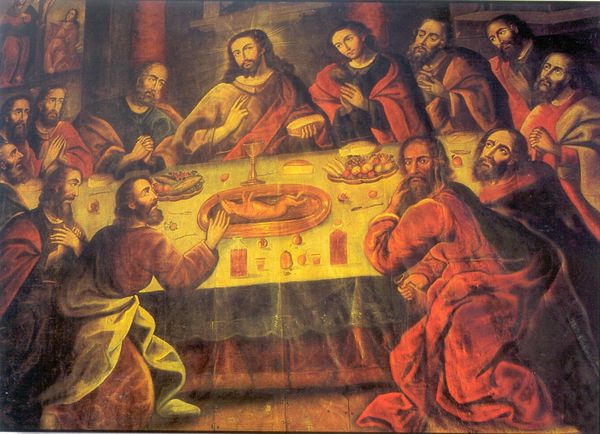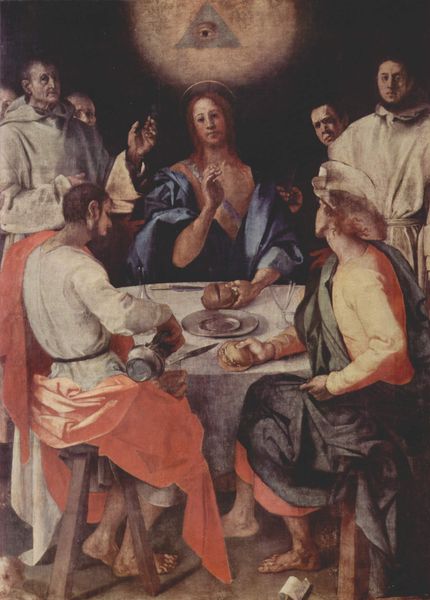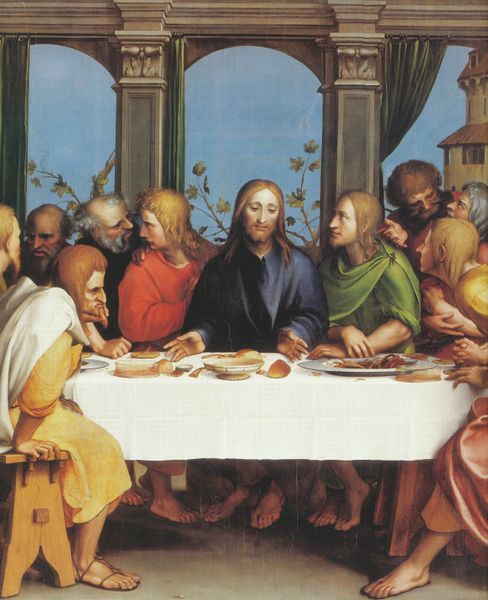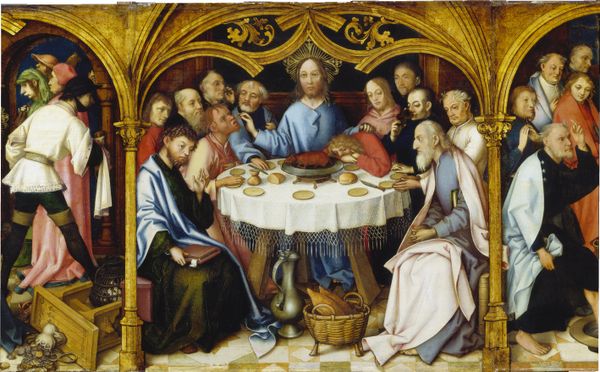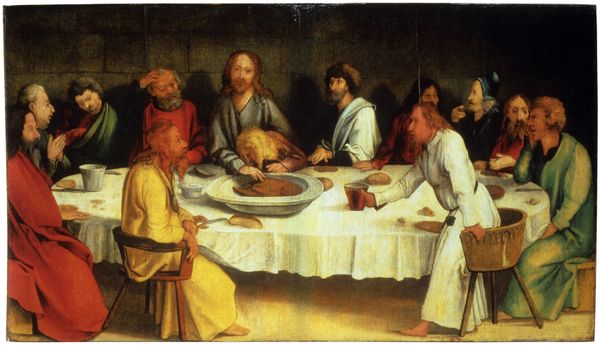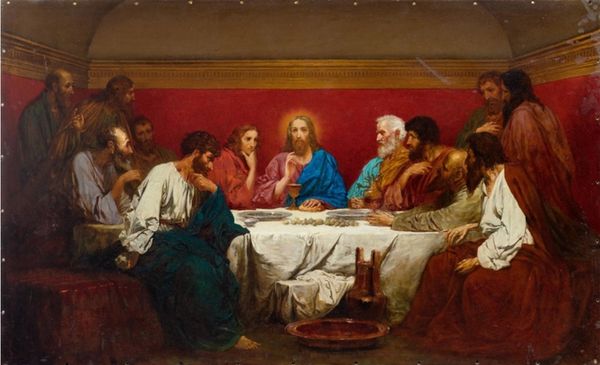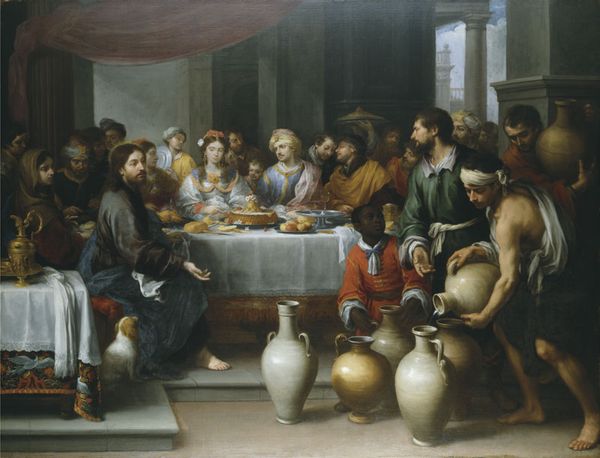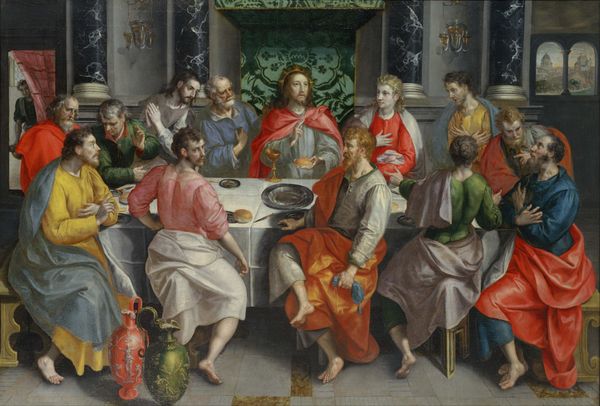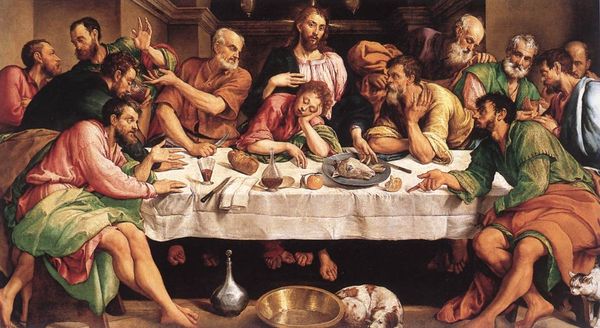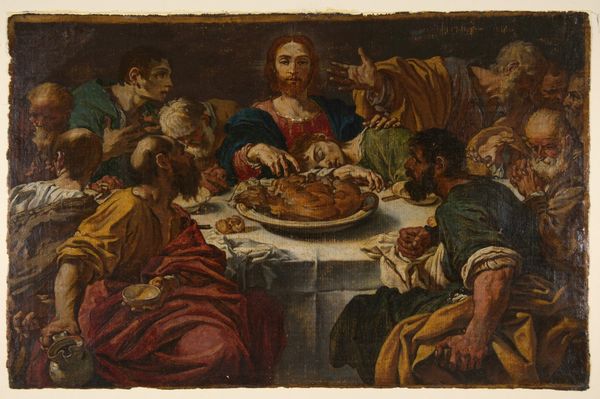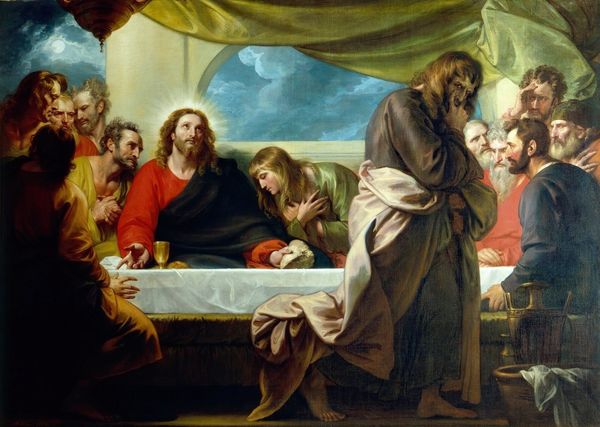
Copyright: Public domain
Editor: This is Mestre Ataíde's "The Last Supper," painted in 1828. The oil painting is grand, and there's a strong sense of both reverence and dramatic activity. I'm especially struck by the array of emotions on each face. What are your initial thoughts when you look at this artwork? Curator: Ah, yes, a fascinating take on a familiar scene! To me, this isn't just a depiction; it's a moment frozen in time, a play of light and shadow capturing the humanity, the tension, and even the quiet dread simmering beneath the surface. Look at the use of color. How the deep reds and blues evoke the gravitas of the moment. There's a certain theatricality, wouldn’t you say? Editor: Absolutely, especially with the gestures. How does Ataíde's approach compare to other Last Supper depictions, like da Vinci's? Curator: That’s an interesting juxtaposition. Where da Vinci offers a very linear and controlled perspective, Ataíde leans into the Baroque, embraces a more emotive response. Do you see how the figures seem to spill out of the canvas, pulling the viewer into the scene? Da Vinci provides clarity, whereas Ataíde is offering you an invitation into the chaos of belief, faith and ultimate betrayal. Editor: I see what you mean, the scene feels so alive. The personal touches are really strong. It makes you wonder, what did Ataíde want us to really *feel*? Curator: Precisely! It's that emotional rawness that makes it sing. I keep coming back to the figures themselves— so caught up in their humanity. In his portrayal, he mirrors the hope, the doubt, the terror within all of us. It's a piece that sticks with you. Editor: I definitely agree. I appreciate how we moved past just seeing a familiar religious scene and looked at it as an emotional one.
Comments
No comments
Be the first to comment and join the conversation on the ultimate creative platform.

